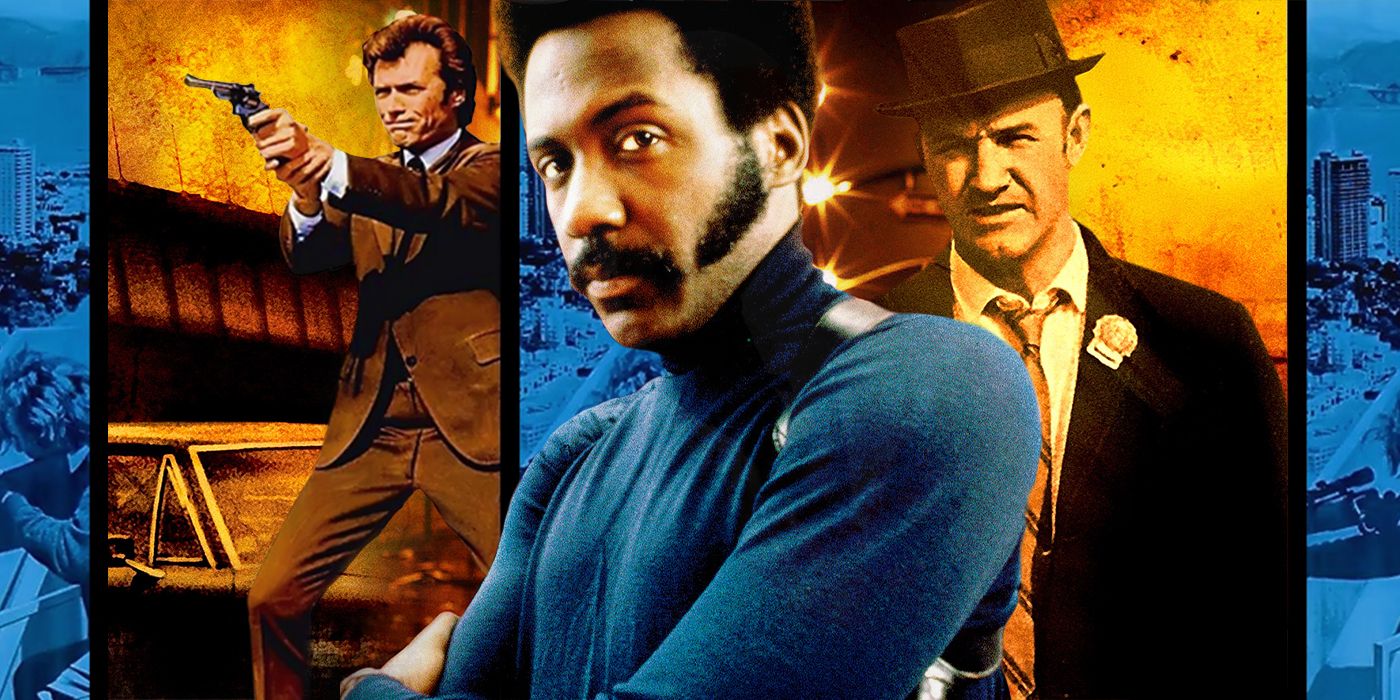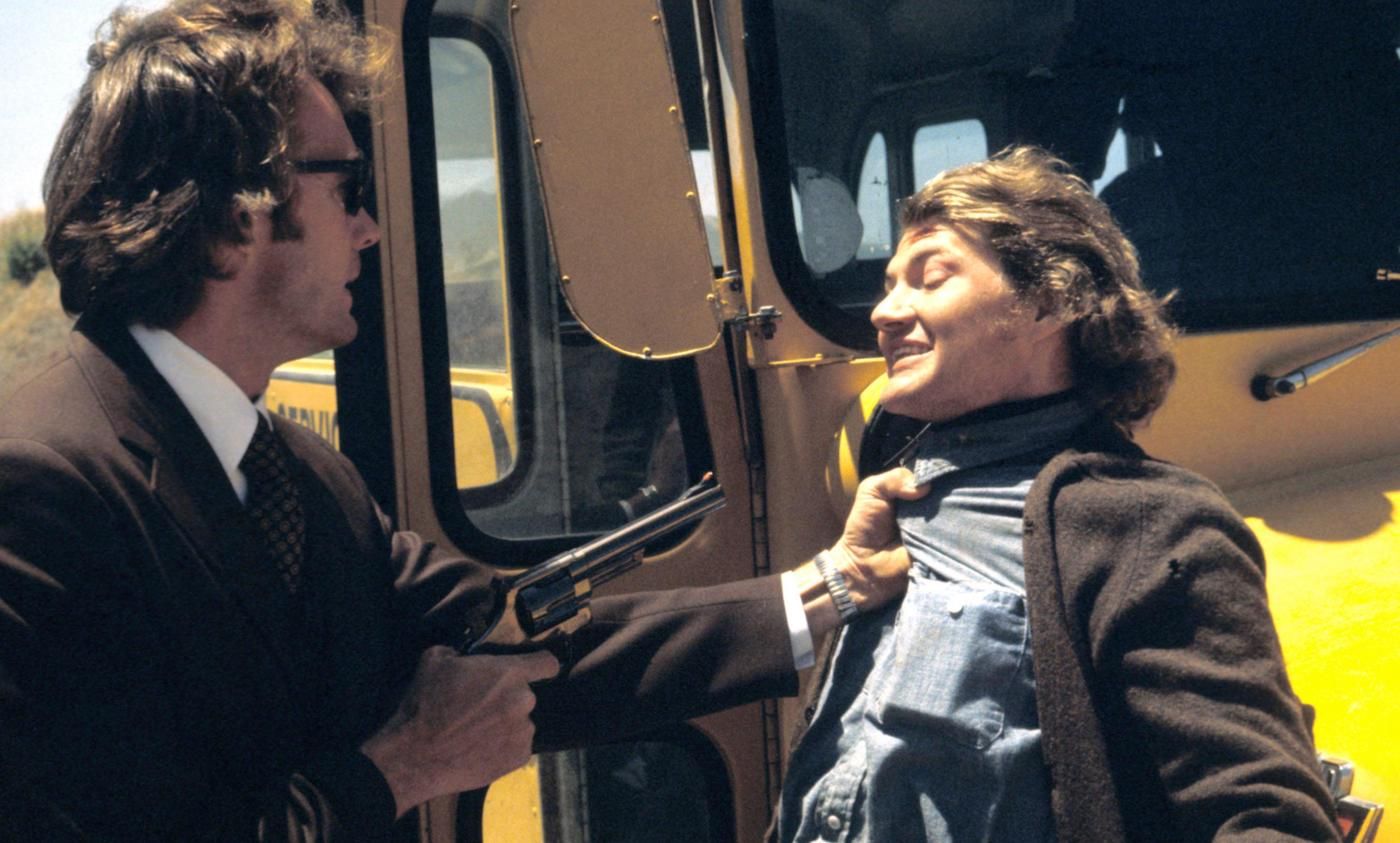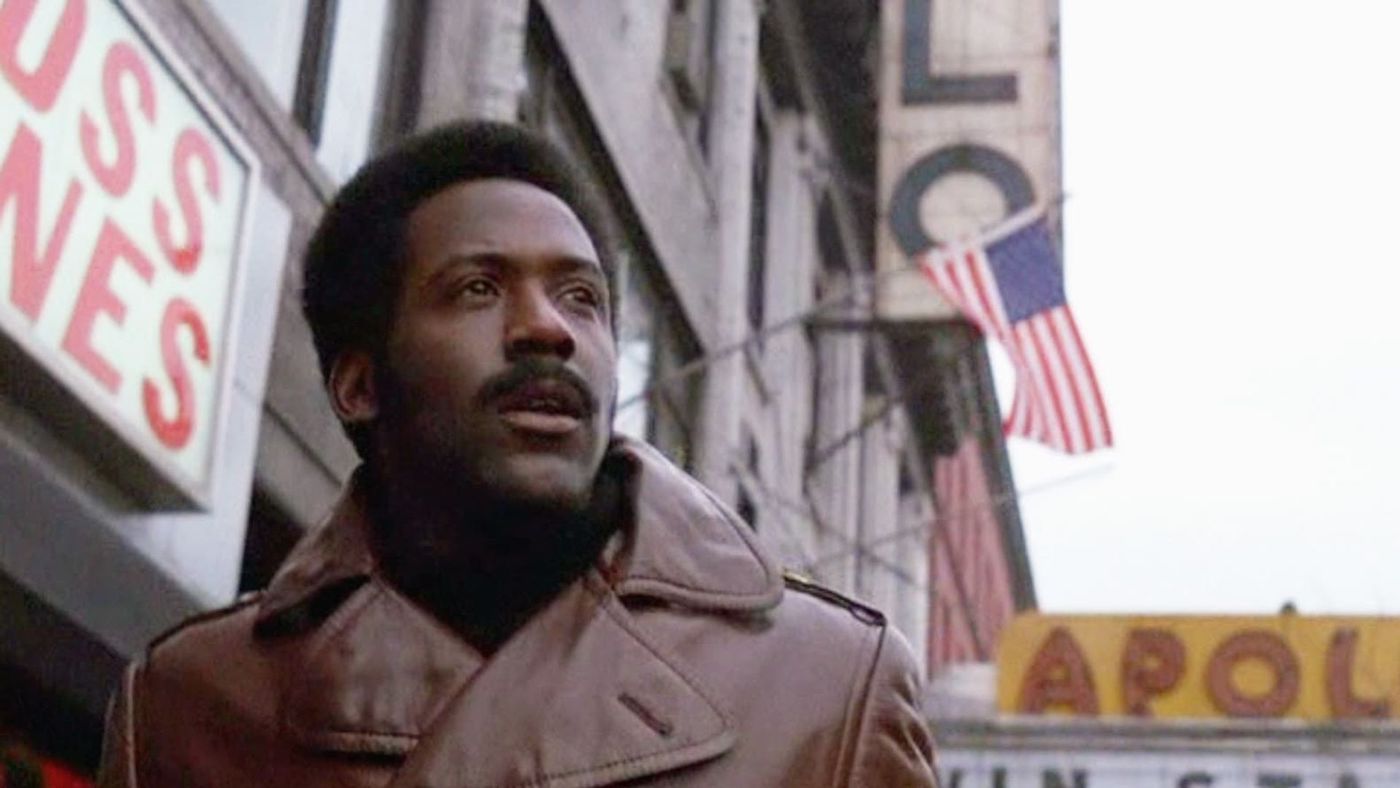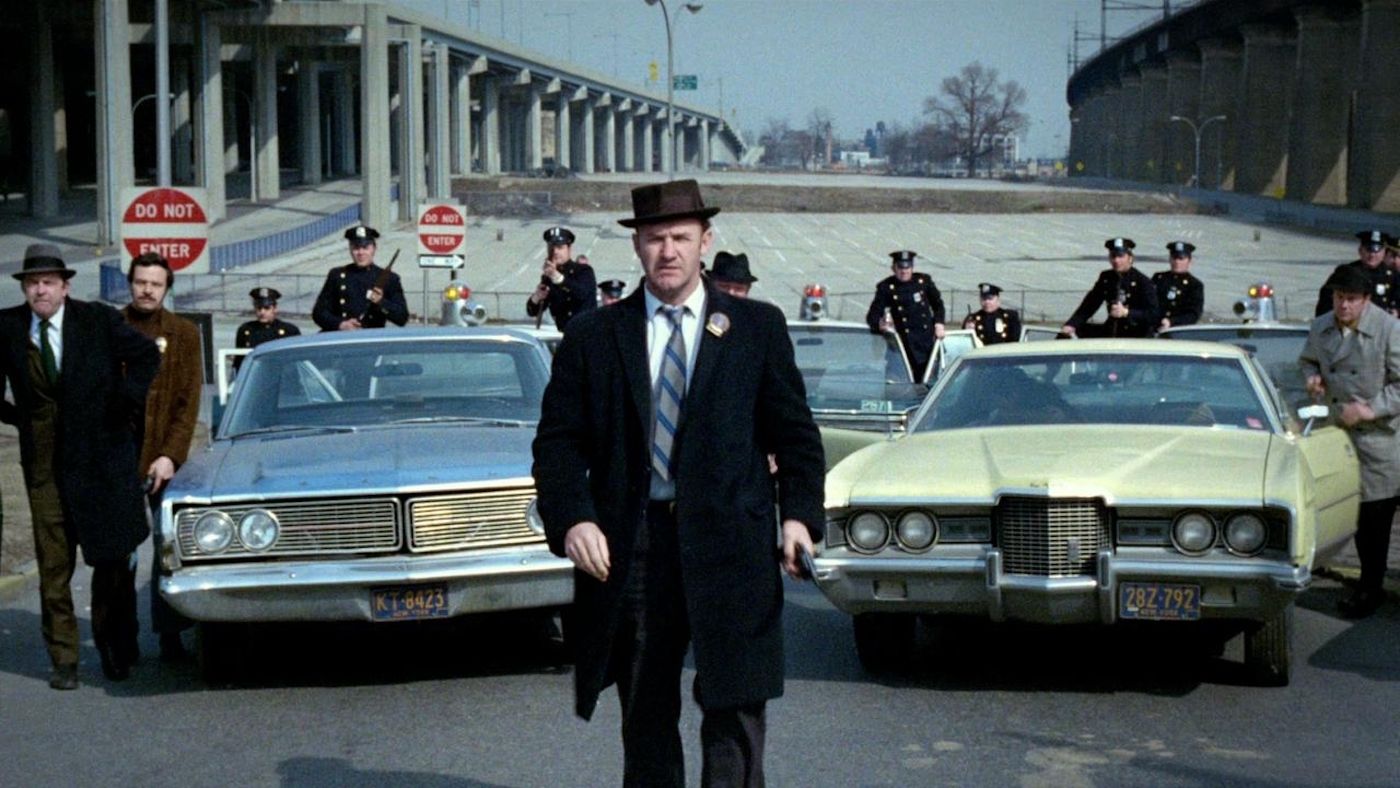Much like the 1960s, the 1970s seems like a decade where “you had to be there” to truly get a sense of what it was like to live through such turbulent times. So for someone who wasn’t there, one way of experiencing somewhat of the overall vibe of the decade is by diving into the films that the era produced. Looking back exactly 50 years, to 1971, one can’t help but notice a certain archetype that emerged from American filmmaking that year. It’s an archetype that you’ve probably seen in countless movies and TV shows — the no-nonsense cop who doesn’t play by the rules, skirting the law and due process in the name of taking down criminals at any cost.
It’s an archetype that hasn’t exactly aged well, considering our growing uneasiness toward law enforcement and the feeling that it creates more problems than it solves when cops take the law into their own hands. However, if we take a look at three films seeing their 50th anniversaries this year — Dirty Harry, Shaft, and The French Connection — you can get a better idea of where this archetype came from, and why audiences found it to be so riveting during the ‘70s and beyond.
Whether you were there or not, it’s hard not to get the sense that by 1970, America had begun to unravel a bit. Vietnam was dividing people along ideological lines, but there was also a feeling of helplessness against rising crime. Statistics show that crime had risen by 126 percent between 1960 and 1970. This created a culture within many police departments where certain officers felt emboldened to overstep their authority in the name of bringing justice to a world they thought had gone mad. In retrospect, much of the rise in crime was attributed to fairly mundane reasons, such as a rising youth population, as well as an increase in alcohol consumption and in poverty. However, Hollywood seemed interested in more sensational crime, such as the rise in drug sales, continued presence of the mafia, and media-savvy serial killers that we see in these three movies.
The loner cop of course was not some new invention that all of the sudden sprang up at the dawn of the ‘70s. Humphrey Bogart had epitomized the type of terse, wisest-guy-in-the-room cops that we saw in his various detective movies of the ’40s and ‘50. 1968’s Bullitt feels like a pivotal film in this genre, though detective Frank Bullitt (played by Steve McQueen) is a little too on-the-level to be comparable to Harry Callahan, John Shaft, or Popeye Doyle. Still, the film’s use of San Francisco as a city that’s both beautiful and terrifying at the same time no doubt influenced Dirty Harry, while its thrilling car chase sequence set the gold standard that The French Connection tried to top. What separates these movies from earlier detective movies is not only the presence of more overt violence, but also that they feel much more plugged-in to the bustling cities they’re depicting. While every Bogart movie feels like it was shot on a Hollywood backlot, we get to see Harry Callahan roaming the streets of San Francisco or John Shaft making the rounds in Manhattan. It gives the films a palpable grit that puts you in the mindset of being in those cities at a time when they were coming apart at the seams.
What was giving San Francisco, in particular, this sense of dread in the early ‘70s was the Zodiac killer. He had murdered 5 known victims across the Bay Area between 1968 and 1969 while sending various letters to the San Francisco Chronicle which emphasized how much he enjoyed killing. Dirty Harry sought to capitalize on the fear wrought by the Zodiac, which along with the Manson murders, had effectively killed the hippie innocence of 1960s California. In the film’s opening scene, we see the slyly-named Scorpio on a rooftop, shooting a girl in a swimming pool, which actually bears more resemblance to the University of Texas tower shooting that happened in 1966. However, once we see the ransom note that police inspector Harry Callahan (Clint Eastwood) uncovers after the shooting, the fact that the handwriting in the ransom note bears a striking resemblance to that of the real-life Zodiac makes it pretty clear what the movie is riffing on.
As a character, Harry Callahan feels like a reaction to the anarchy that a killer like Scorpio embodies. The film was fairly controversial when it was released, with many critics pointing at the harmful way the film skirts defendant’s rights in favor of vigilante justice. Roger Ebert perhaps summed it up best when saying the film was "very effective at the level of a thriller” while also coming to the conclusion that its morals are unmistakably fascist. Looking at it now, this idea that the film is very entertaining despite its troubling message still more-or-less rings true. There is not a lot of flab in this movie, which economically sets up the killer and his unquenchable motivations, and then grippingly lets Harry Callahan go to town on taking him down. The film makes it clear that Harry is not a great guy; in an early scene, a fellow cop says “Harry doesn't play any favorites! Harry hates everybody,” before listing off all the minorities Harry doesn’t like. There’s also a particularly brutal scene where we see Harry stick his foot on Scorpio’s open leg-wound, which undoubtedly qualifies as torture. Though Harry’s boss later reams him out and says the case is doomed because of his conduct, the triumphant way that Harry eventually takes matters into his own hands doesn’t give the sense that his actions are going to have consequences. Similarly, even though the film doesn’t necessarily go out of its way to paint Harry as a hero, you get the sense that the film is usually on his side.
From its opening moments, there's no doubt who’s side the movie Shaft is on, as we see the sharply-dressed John Shaft (Richard Roundtree) strutting the sidewalks of Times Square as Isaac Hayes’ brilliant score asks “who is the man that would risk his neck for his brother, man?” A question to which we all know the answer. John Shaft is quite simply the coolest private detective ever, and the film makes this pretty clear from the first few braggadocious encounters with his fellow cops as well as with some criminals that ends in a man flying out a window. Despite the undeniable charm of Shaft, after this incident, he gets a thorough talking-to from a lieutenant at the local police precinct that makes it seem like Shaft is on a way tighter leash than Harry Callahan, who unlike Shaft, actually is the cause of a decent amount of mayhem and works directly for the city’s police department. This gets at the fact that as American cinema’s first Black action hero, John Shaft still has different standards to abide by, even if his guts and guile make him every bit as compelling as his white counterparts.
Having to straddle the line between Black and white society is central to the premise of Shaft, as it sees the detective working with a Black crime family, since the head of the family’s daughter has been kidnapped by the Italian mafia. While Shaft seems to have gained the trust of those living in Harlem, many in his community still can’t seem to shake Shaft’s status as a part of the establishment. This could also be applied to how Shaft — the work of a Black director, Gordon Parks, and white screenwriters, Ernest Tidyman and John D.F. Black — was in many ways designed to walk a fine line between appealing to both Black and white audiences. In the wake of Sweet Sweetback’s Baadasssss Song, Hollywood was looking to cash in on the burgeoning blaxploitation genre and Black America’s desire to see themselves in their action heroes. So Shaft provided a slightly more big-budget approach to this movement, providing a blockbuster soundtrack and a script that was both steeped in the traditional detective genre but also emboldened by the Black Pride that accompanied the years preceding the Civil Rights movement.
It’s not terribly surprising that Shaft scribe Ernest Tidyman also wrote the script for The French Connection, since you could imagine John Shaft bumping into Popeye Doyle (Gene Hackman) on the same dingy streets of ‘70s New York, as they both inhabit the same worlds and are on the lookout for the next big bust. The French Connection might be the best of these three cop movies (it won the 1971 Best Picture Oscar) because it never really paints Popeye Doyle as a hero. In Popeye’s first scene, we see him chase down a perpetrator, before taking the eye-for-an-eye approach by beating the crap out of him after he slashes Doyle’s partner with a knife. This combined with the sight of Doyle wearing an undercover Santa costume throughout the sequence establishes that he’s more of a kook than someone to be idolized, especially when he’s portrayed by Gene Hackman, perhaps the most “character actor” movie star of all time.
In addition to being the year that established the loose-cannon cop, 1971 was also the year that President Richard Nixon declared war on drugs, and this story of a French drug kingpin trying to bring a huge score of heroin into the United States feels like a distinct product of this new all-out assault on the drug trade. The film makes it pretty clear that the cops trying to catch these drug magnates aren’t so much interested in putting a stop to people being ravaged by addiction as much as they are in the hunt for drugs at any cost. While Popeye Doyle’s apathy towards humanity and toddler-like temper tantrums make him far from the kind of cop you’d want patrolling your street, there’s something about his obsession over catching the bad guys that makes him riveting to watch. This culminates in the film’s most famous sequence, where we see Doyle commandeering a civilian’s car and chasing an assassin beneath several subway stops while narrowly avoiding a couple dozen car accidents.
What makes all three of these characters especially hard to wrestle with is how incredibly magnetic they are onscreen. Though Hackman’s performance in The French Connection would take home an Oscar, Richard Roundtree and Clint Eastwood also give effortlessly charismatic performances that easily convey why audiences were ready to see these characters return in a parade of sequels. Whether characters working in law enforcement with such muddy morals deserved to be enshrined in Hollywood immortality is still absolutely open to debate, especially as discussions in police accountability took center stage after the murder of George Floyd in 2020. However, it seems unlikely that the archetype of the loose-cannon cop is going away any time soon, as it’s had a particularly long life on TV, from NYPD Blue to The Shield to this year's Mare of Easttown. So really, it gets down to how much these works of fiction are willing to glorify these cops’ misdeeds and how much they’re willing to hold them accountable, no matter how cool or charismatic they might be.




